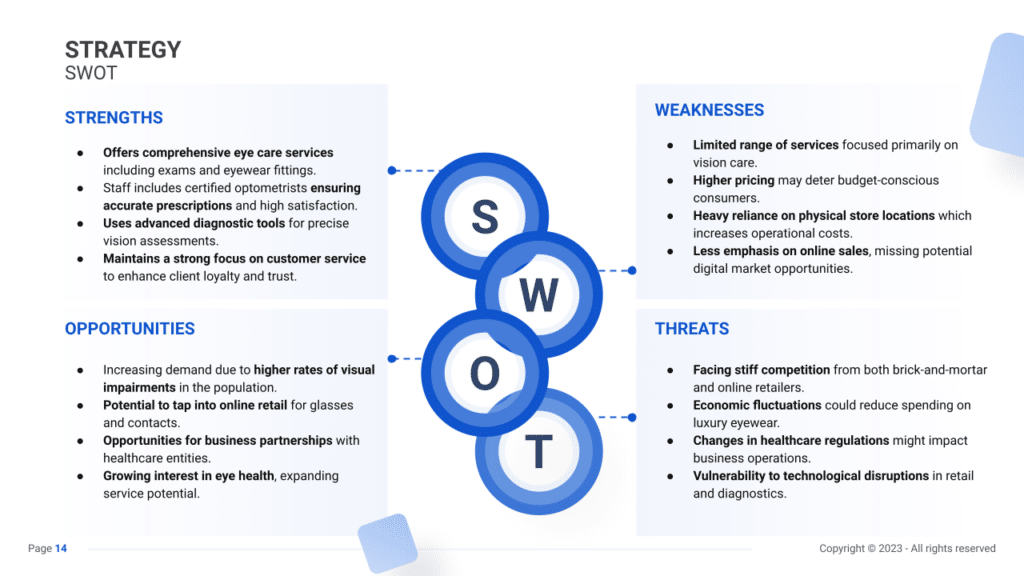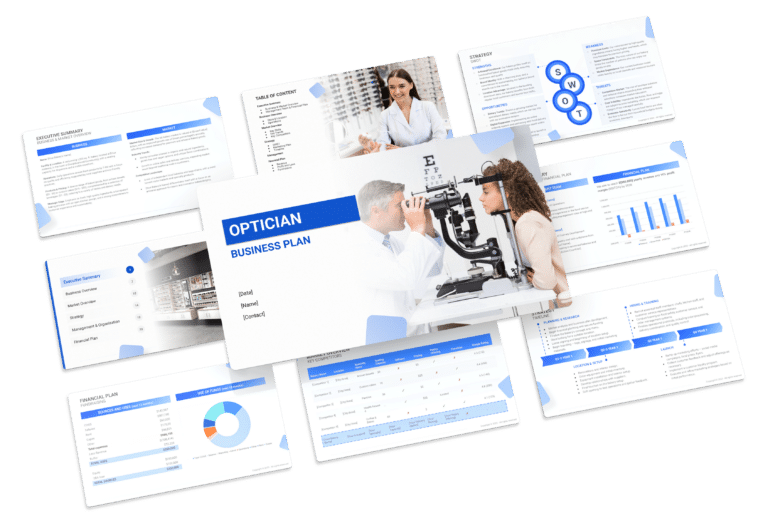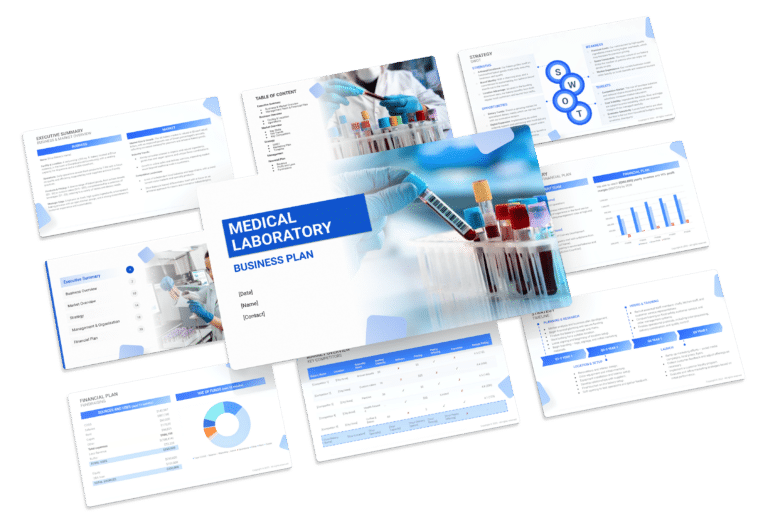How to Prepare a SWOT for an Optician Clinic

Essential for an optician clinic’s business plan, a SWOT analysis (Strengths, Weaknesses, Opportunities, Threats) evaluates internal and external factors. Clinic-controlled strengths and weaknesses contrast with external opportunities and threats.
Incorporating a SWOT analysis reveals the clinic’s market position, spotlighting growth and improvement areas. Strengths may include skilled optometrists, cutting-edge technology, and positive patient outcomes, while weaknesses could involve limited services or outdated equipment.
This article will explore diverse examples of strengths and weaknesses, equipping optician clinic owners with insights for seamless integration into their business plans.

Strengths
- Expertise in Eye Care: Optician Studios are often helmed by professionals with deep knowledge in eye health.
- Example: A studio with certified optometrists can offer expert eye exams, boosting customer trust.
- Advanced Optical Technology: Investment in the latest optical equipment can be a significant strength.
- Example: State-of-the-art eye testing tools can provide more accurate prescriptions, enhancing service quality.
- Personalized Customer Service: Tailored experiences can set an Optician Studio apart from chain stores.
- Example: Offering custom frame fittings can create a loyal customer base that values a personal touch.
- Strategic Location: A studio located in a community with an aging population can capitalize on the higher demand for eye care.
- Example: Proximity to retirement communities can drive steady traffic to the studio.
Weaknesses
- Limited Marketing: Small studios may struggle with visibility due to a constrained marketing budget.
- Example: Without effective online advertising, potential customers might overlook the studio.
- Inventory Costs: High-quality frames and lenses can lead to significant upfront costs.
- Example: Stocking designer frames increases costs, which may not always translate into immediate sales.
- Staff Training: The need for continuous education can be a financial and logistical challenge.
- Example: Regular training to keep up with technological advancements can strain resources.
- Dependence on Suppliers: Reliance on a few suppliers for frames and lenses can be risky.
- Example: If a supplier fails to deliver, it can lead to stock shortages and lost sales.
Opportunities
- Telehealth Integration: Embracing telehealth can expand services and attract tech-savvy customers.
- Example: Offering online consultations can make the studio accessible to a broader audience.
- Partnerships with Health Providers: Collaborations can lead to referrals and a wider customer base.
- Example: Partnering with local clinics can secure a steady stream of new clients.
- E-commerce Expansion: Selling glasses and contact lenses online can tap into the digital market.
- Example: An online store allows customers to purchase from the comfort of their homes.
- Sustainable Practices: Eco-friendly products and practices can appeal to environmentally conscious consumers.
- Example: Offering frames made from recycled materials can differentiate the studio.
Threats
- Competitive Market: The increasing number of optical retailers creates a highly competitive environment.
- Example: Big chains offering competitive prices can lure away cost-conscious customers.
- Technological Disruptions: Online eye tests and direct-to-consumer sales models are changing industry dynamics.
- Example: Apps that offer prescriptions may reduce the need for in-person eye exams.
- Economic Downturns: Recessions can lead to reduced spending on non-essential goods, including eyewear.
- Example: In tough economic times, customers might delay updating their prescriptions.
- Regulatory Changes: New healthcare regulations can impact operational costs and profit margins.
- Example: Changes in healthcare insurance coverage can affect customer spending on eyewear.





